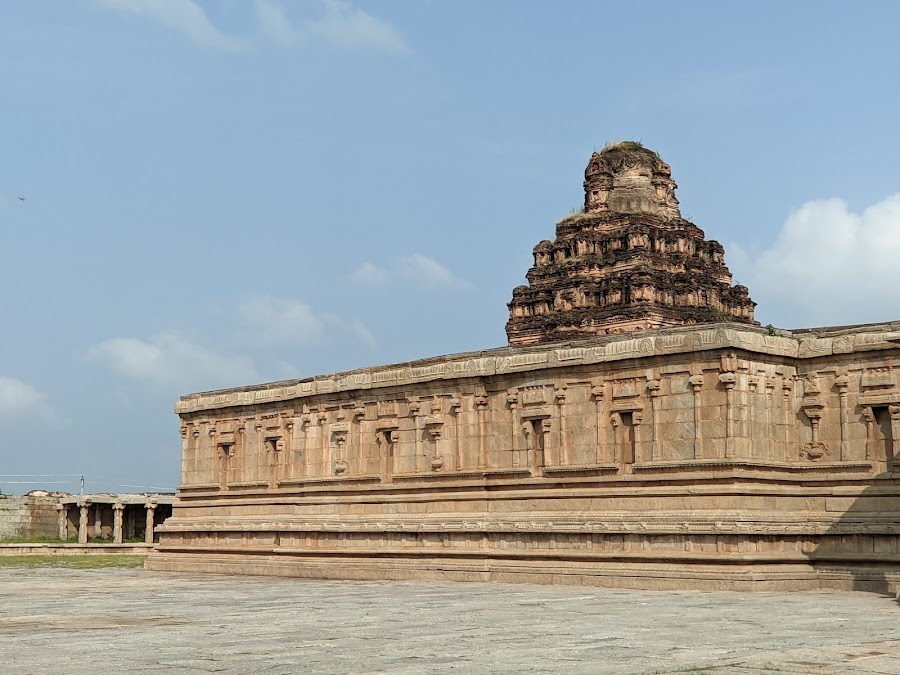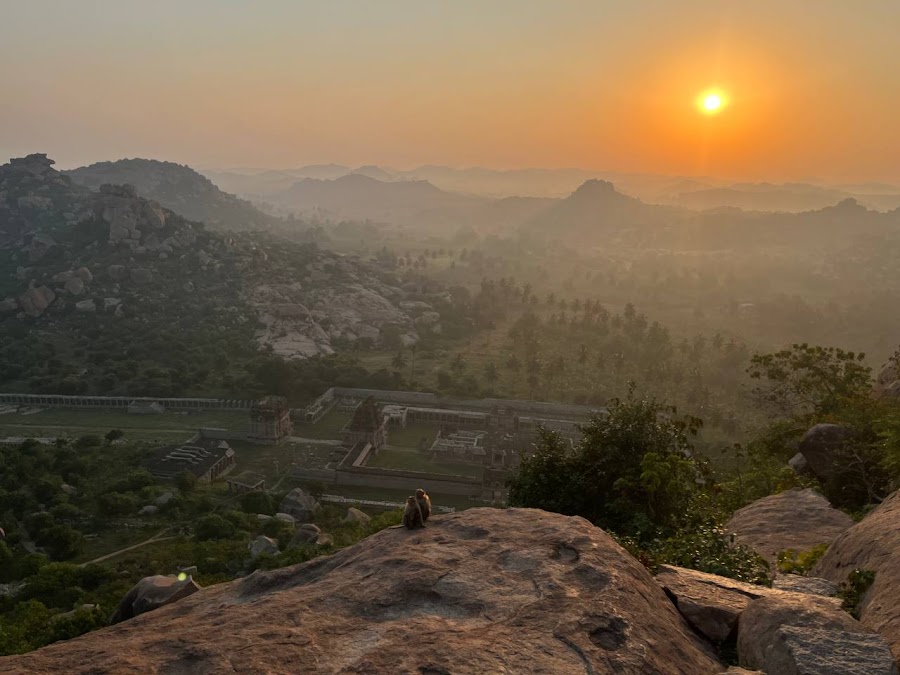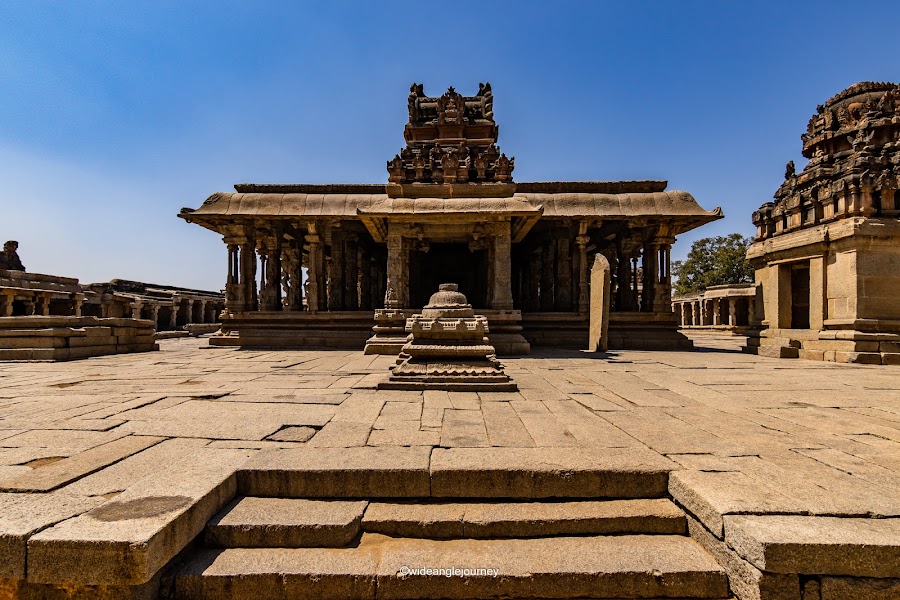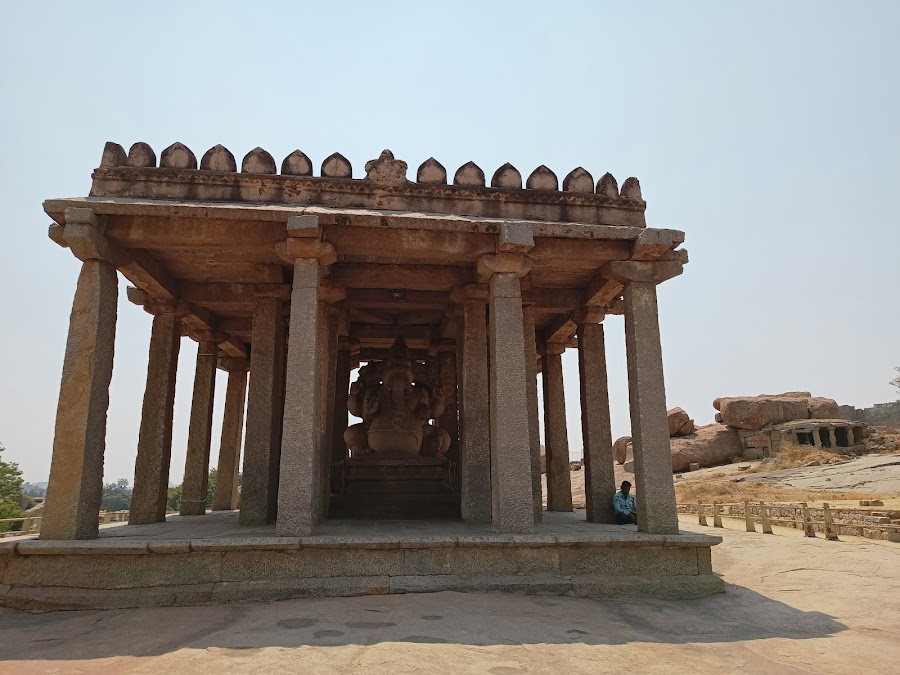Hazara Raama Temple
Hampi, Karnataka, India
Hey adventurers! Journey back in time at the Hazara Rama Temple in Hampi, Karnataka! Once known as the 'Hazara Rama Chandra Swamy Temple,' this ancient marvel is packed with amazing stories carved right into its walls. Imagine kings and queens praying here centuries ago, surrounded by these incredible carvings! It's a must-see for any young explorer in India!
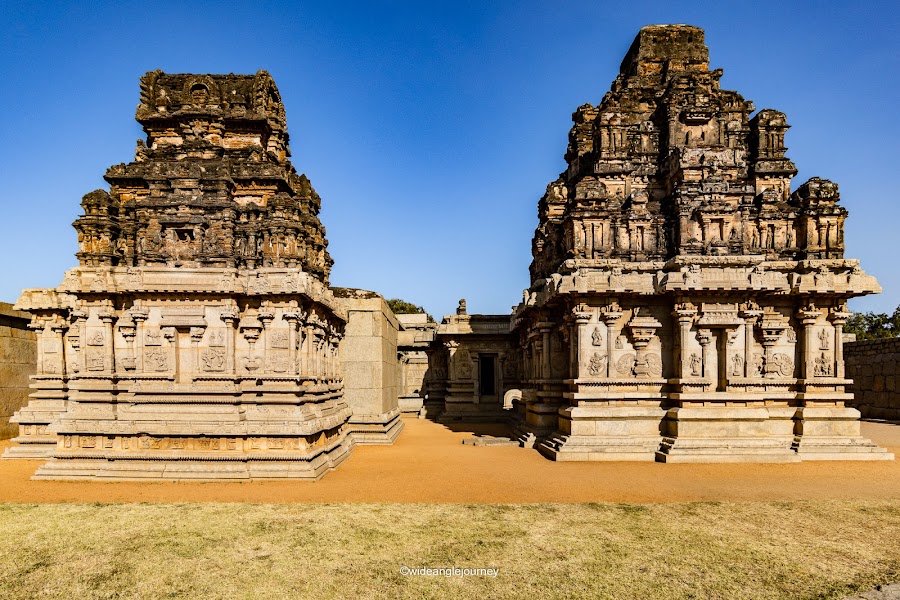
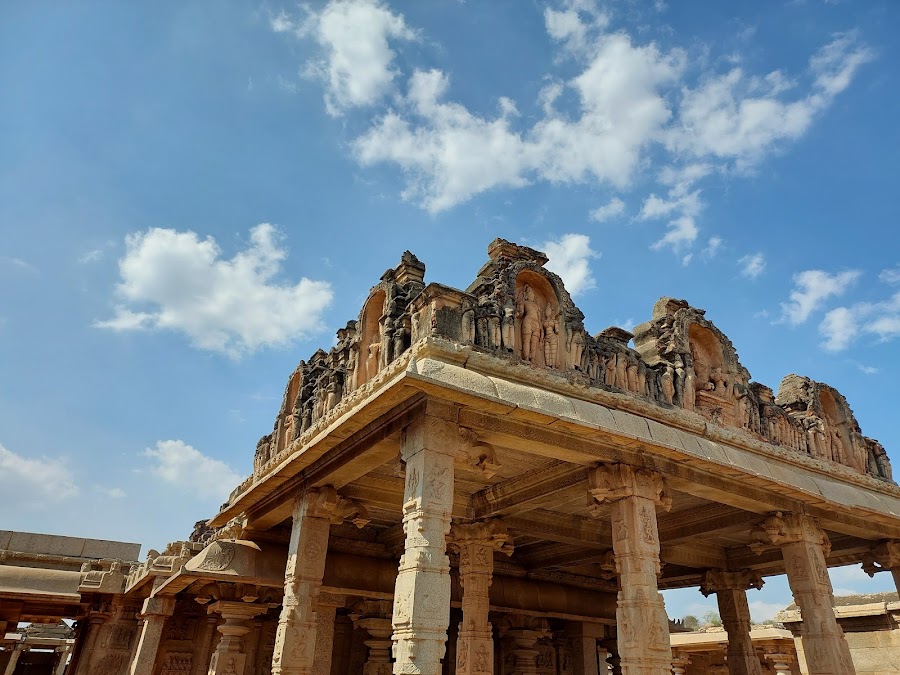
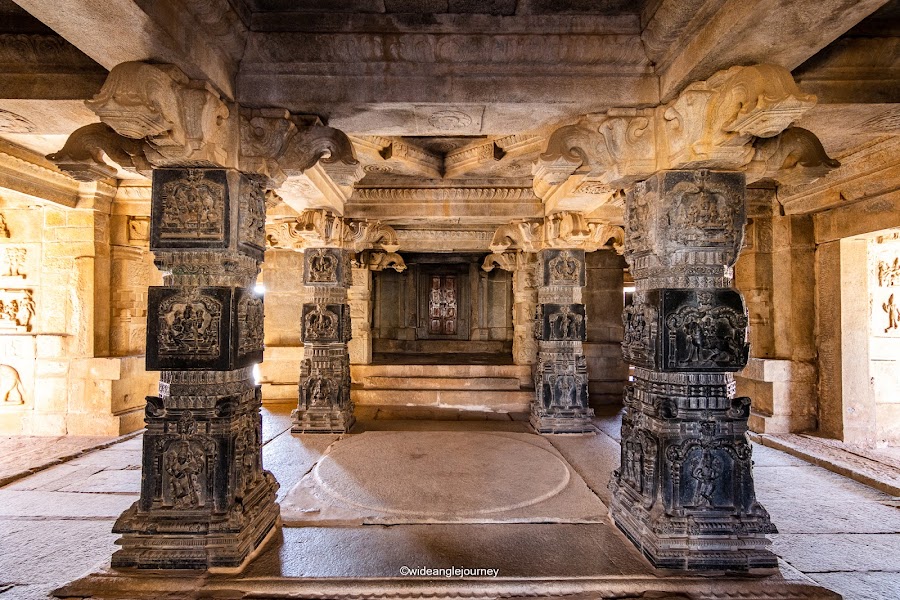
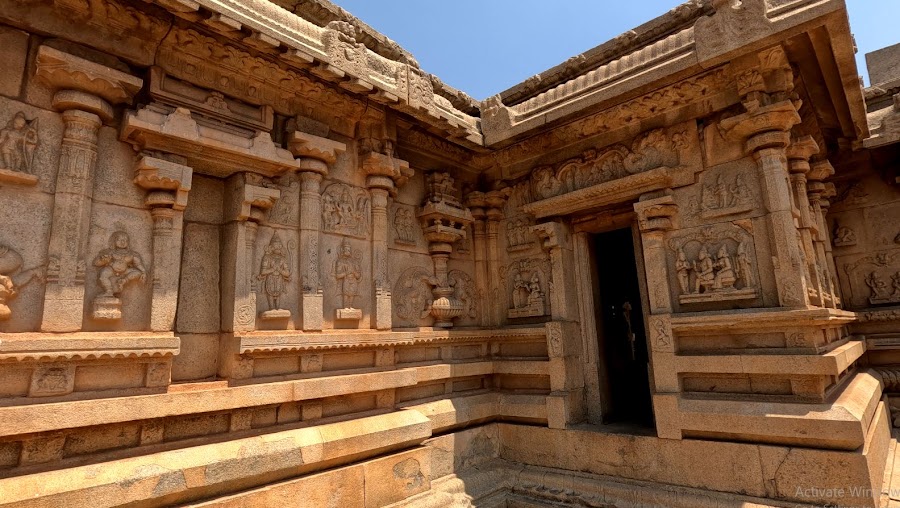
Interactive Map
Key Activities
Additional Places
Reviews
Map View
Top Activities in Hazara Raama Temple
- 1
Admire The Detailed Sculptures Of Deities, Dancers, And Musicians.
- 2
Capture Stunning Photographs Of The Temple'S Architecture.
- 3
Explore The Intricate Carvings Depicting Scenes From The Ramayana.
- 4
Soak In The Serene Atmosphere Of This Historic Site.
Detailed Information
Best Time to Visit
October to March
When to visit place on the day
Approximate expense
₹500 per person
History
Built in the 15th century AD, the Hazara Rama Temple was commissioned by King Devaraya I of the Vijayanagara Empire. It's believed that the temple was initially dedicated to Lord Vishnu, and the Ramayana carvings were added later during the reign of King Krishna Deva Raya. This makes the temple unique, as it showcases the artistic contributions of two prominent Vijayanagara rulers. The temple, unlike many others in Hampi, seems to have escaped major destruction during the Deccan Sultanate's invasion, preserving its exquisite artwork for us to admire today.
Recent Google Reviews
The Hazaara Ramachandra Temple and Pasupari Bazaar are among the most notable landmarks of Hampi, reflecting both the architectural grandeur and cultural vibrancy of the Vijayanagara Empire. These structures are integral to understanding the historical, religious, and cultural heritage of this iconic site. The Hazaara Ramachandra Temple, located adjacent to the royal palace of Harihara, stands as a testament to the artistry and devotion of the Vijayanagara period. The name "Hazaara," meaning "thousand," is derived from the temple's location within a courtyard that was part of the palace complex. This courtyard is adorned with numerous relief sculptures depicting scenes from the Ramayana, thus earning the temple its name. These detailed depictions narrate episodes from the great Hindu epic, emphasizing the centrality of the Ramayana in the cultural fabric of the Vijayanagara Empire. Architecturally, the temple is an exemplary representation of the Vijayanagara style. The east-facing temple has a classic layout consisting of a garbhagriha (sanctum sanctorum), antarala (vestibule), and a navaranga (hall) with three entrances, providing a sense of openness and accessibility. A spacious pillared porch, known as the gudha mandapa, leads into the temple, inviting devotees and visitors alike to experience its spiritual significance. The temple is encased within an enclosure wall, with gateways to the east and north, and an additional passageway at the south, ensuring the sanctity and security of the sacred space. Dating back to the 14th and 15th centuries, the Hazaara Ramachandra Temple is renowned for its exquisite wall friezes, which not only depict the Ramayana but also include scenes from the Bhagavata, another important Hindu text. The intricate craftsmanship on the temple walls provides valuable insights into the art and cultural expressions of the period. The four chitrakhanda pillars in the hall are particularly noteworthy for their polished black stone, meticulously sculpted with detailed imagery. These pillars stand as symbols of the masterful stonework that was characteristic of Vijayanagara architecture. Additionally, the temple complex houses a separate shrine for Devi and several pillared mandapas located at the north-east, south, and west corners, further enhancing the temple's architectural significance. One of the unique features of the Hazaara Ramachandra Temple is its royal connection. The temple had a separate exit pathway specifically designed for the royal family, which is indicative of the importance of the temple within the palace complex. This feature highlights the intersection of religion and royalty in Vijayanagara society, where temples played a central role in statecraft and governance. Just outside the temple, to the eastern side, lies the Hazaara Ramachandra Bazaar, a bustling market area that measures nearly 930 meters in length. The market is an essential element of the Vijayanagara heritage, known for its significance as both a commercial hub and a cultural space. The street, known in inscriptions as Kramuka-pamapana vidhi or Pedda Angadi vidhi, was the primary marketplace of Vijayanagara. It was not only the site of daily commerce but also hosted the weekly Friday market, where traders and artisans would gather to sell their goods. The market is lined with smaller shrines, tanks, and mandapas, which reflect the multifaceted nature of Vijayanagara urban planning. These structures were designed to accommodate both religious and commercial activities, underscoring the city’s holistic approach to urban life. The integration of religious and economic spaces within the same locale highlights the cultural ethos of the Vijayanagara Empire, where spirituality and commerce were deeply intertwined. One of the important landmarks on the left side of the street is the temple dedicated to Goddess Durga, locally known as Pattanad Vellamma. This temple was especially significant during the Mahanavami festivals, when the Vijayanagara rulers would engage in elaborate worship of the goddess. The goddes
Visited the Hazara Rama Temple recently, and it’s a hidden gem in Hampi ! The intricate carvings on the walls tell stories from the Ramayana and are absolutely stunning. The peaceful vibe of the temple adds to the experience, making it a great spot to soak in Hampi’s history. Jay shree Ram !
1. This is one of the left structures and is beautiful. It has carvings which depict Ramayana episodes. 2. You should take a guide who can inform you about the carvings on the walls. 3. Once you buy a ticket, you can visit all the structures of the Hampi for a day. 4. It was a temple for Kings and their royal family.
Among the many monuments preserved in Hampi, the Hazara Ramachandra Temple near the Royal Enclosure stands out, even though the main deity is no longer present. This temple, dedicated to Lord Rama, has pillars and walls adorned with intricate carvings that narrate stories from the Ramayana and showcase the grandeur of the Vijayanagara dynasty. The architecture is mesmerizing, with each pillar and wall revealing artistic depictions of deities and various scenes, reflecting the richness of the era's history and culture. The temple's structural integrity is remarkably well-preserved, making it one of the finest examples of the brilliant craftsmanship of the time, still inspiring awe in visitors today.

